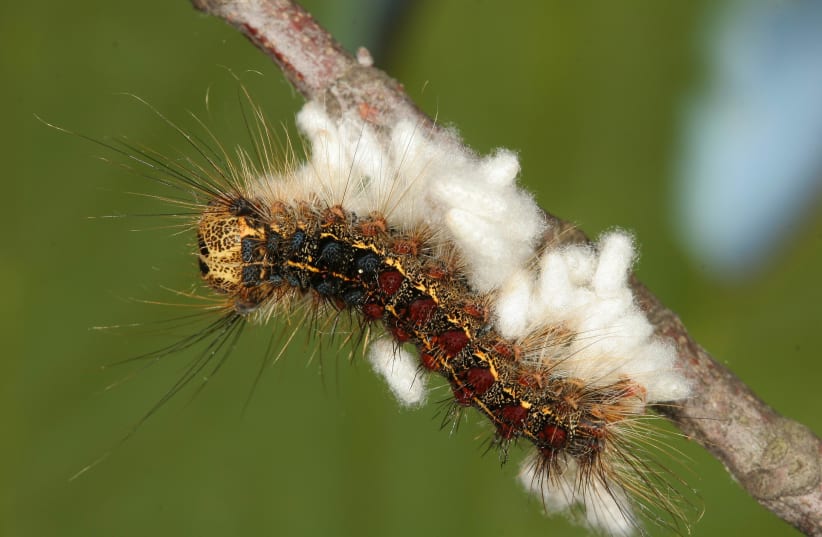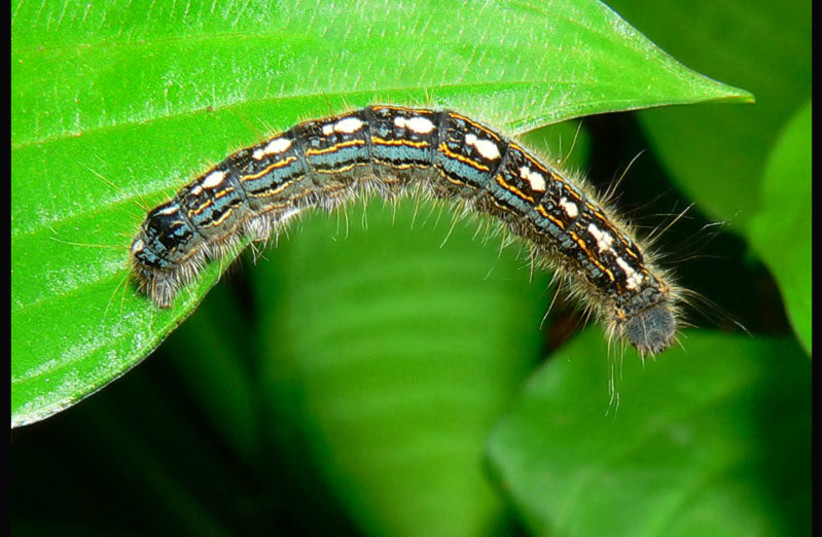Carbon emissions are continuing to be a pervasive and worsening problem around the world, but it is not just humans and factories creating them, but the humble, hungry caterpillar, a new study revealed.
Animals producing carbon emissions is nothing new. For instance, livestock produces around 14.5% of all greenhouse gases in the world, according to the United Nations Food and Agriculture Organization (FAO).
Caterpillars might not seem the likely source of further emissions, but looks can be deceiving.
The caterpillars in question are the invasive gypsy moths Lymantria dispar dispar and forest tent caterpillar moths Malacasoma disstria. Outbreaks of these species happen around every five years in temperate forests. During these outbreaks, the caterpillars consume so many leaves and defecate so much that the very cycle of nutrients between land and nearby lakes is altered on a huge scale.
This is particularly evident with carbon and nitrogen. The caterpillar excrement, called frass, is rich in nitrogen. It often ends up washing into lakes and fertilizing microbes. This, in turn, helps them metabolize, which releases more carbon dioxide into the atmosphere. This makes it hard for the algae in the lakes that reduce carbon dioxide through the carbon cycle to keep up.
“These insects are basically little machines that convert carbon-rich leaves into nitrogen-rich poo,” explained Prof. Andrew Tanentzap, head of the University of Cambridge Department of Plant Sciences' Ecosystems and Global Change Group and senior author of the paper, which was published in the academic journal Nature Communications.
“The poo drops into lakes instead of the leaves, and this significantly changes the water chemistry - we think it will increase the extent to which lakes are sources of greenhouse gases.”
The study is believed to be the most extensive study on insect outbreaks impacting freshwater carbon and nitrogen dynamics, combining 32 years of government data on insect outbreaks and lake water chemistry in 12 different lake catchments across Ontario, and even made use of satellite remote sensing on forests and leaves.
As time goes on, this is only expected to get worse. The caterpillars are expected to extend their range northwards as the climate continues to change. This means that the damage they are causing in the south could soon start happening in the North. As the North has even more freshwater lakers, their range might become even more widespread.
They will also be further helped by climate change, as broadleaved deciduous trees are likely to be favored by the rising temperatures, and this will only help the caterpillars out further.
“Outbreaks of leaf-eating insects can reduce the carbon dissolved in lake water by almost a third when the trees around the lake are mainly deciduous. It’s just amazing that these insects can have such a pronounced effect on water quality,” said Ecosystems and Global Change Group postgraduate student and first author on the study Sam Woodman.
He added “from a water quality perspective they’re a good thing, but from a climate perspective they’re pretty bad – yet they’ve been completely overlooked in climate models.”
The Environment and Climate Change portal is produced in cooperation with the Goldman Sonnenfeldt School of Sustainability and Climate Change at Ben-Gurion University of the Negev. The Jerusalem Post maintains all editorial decisions related to the content.

